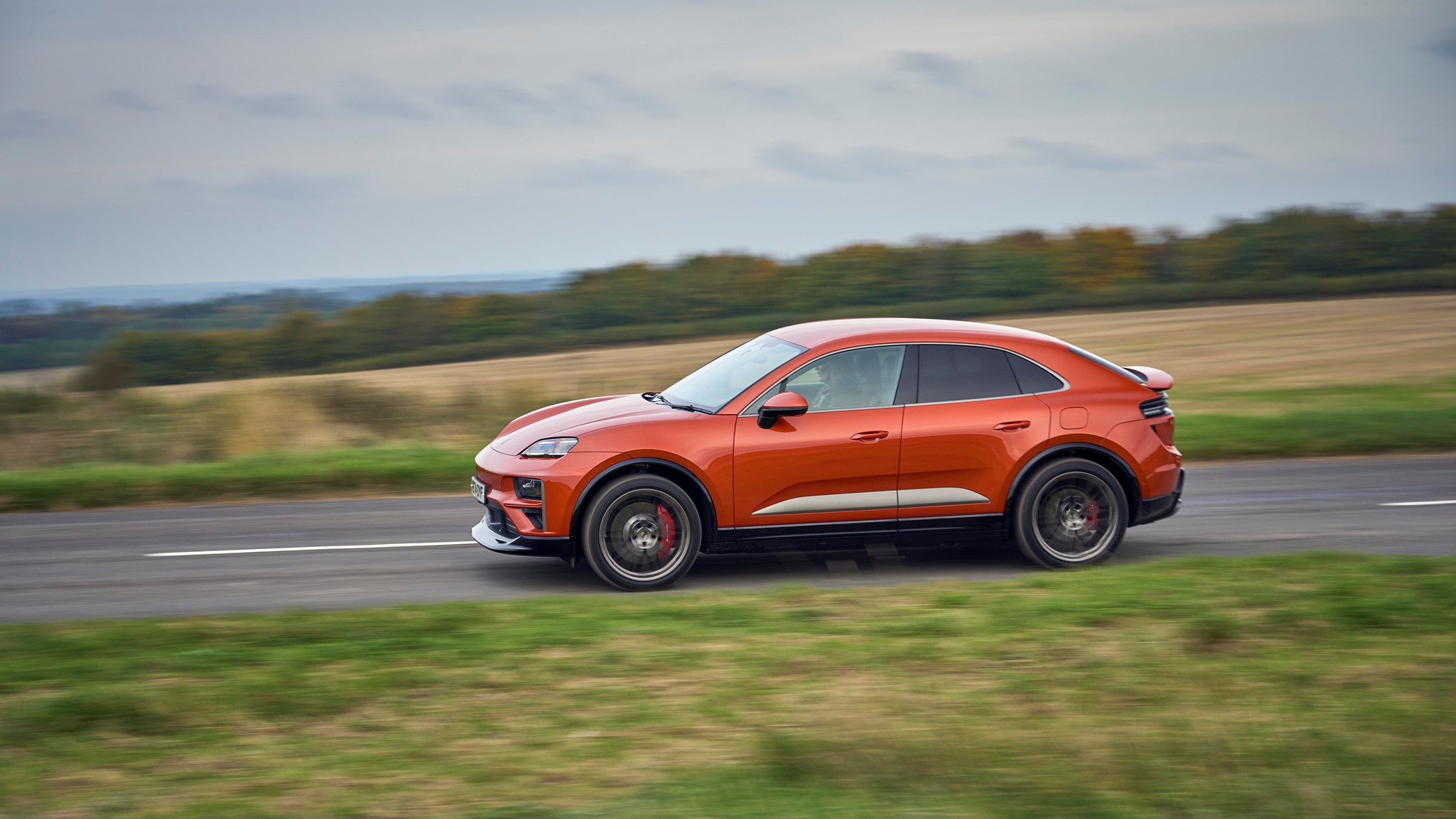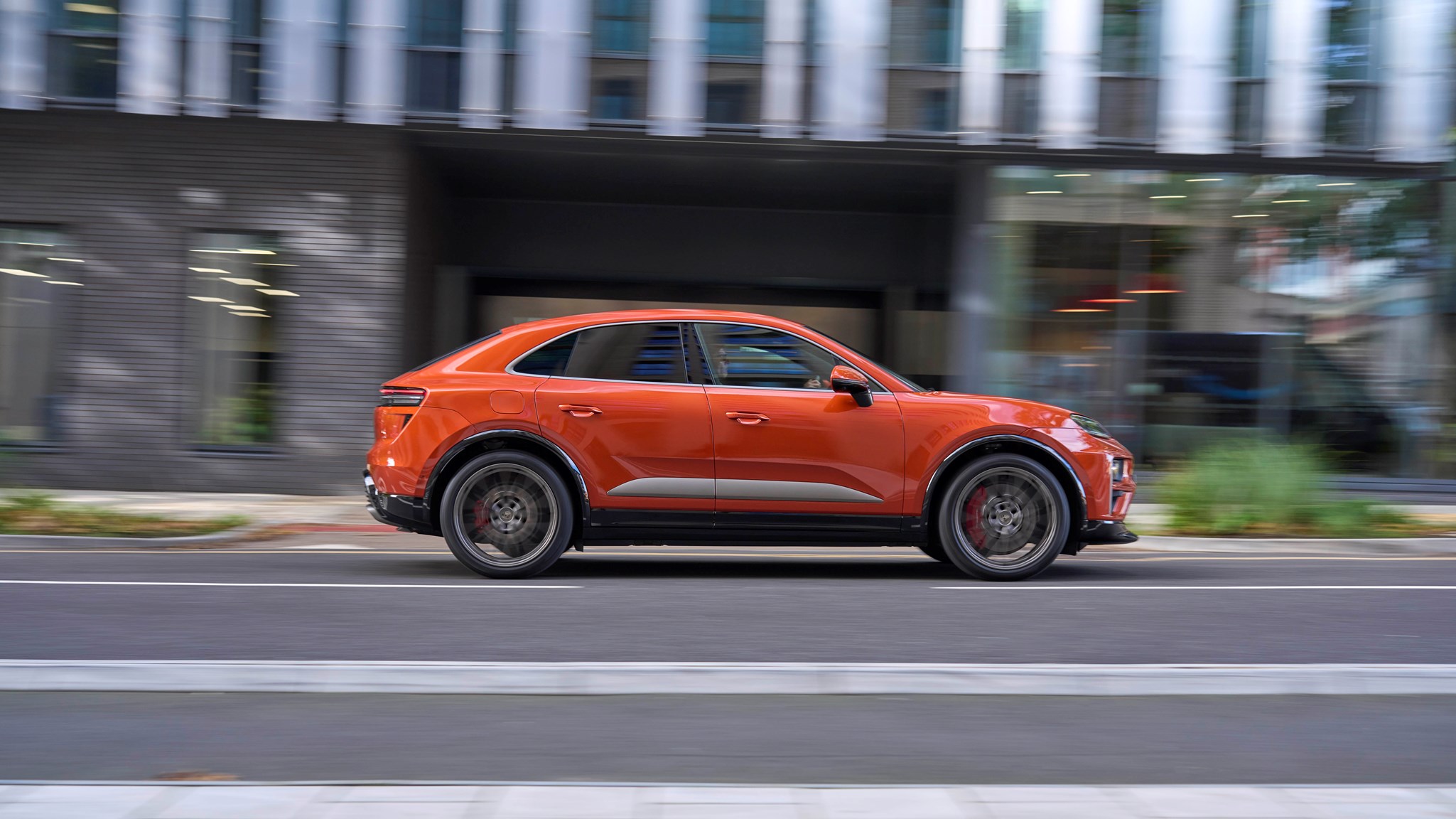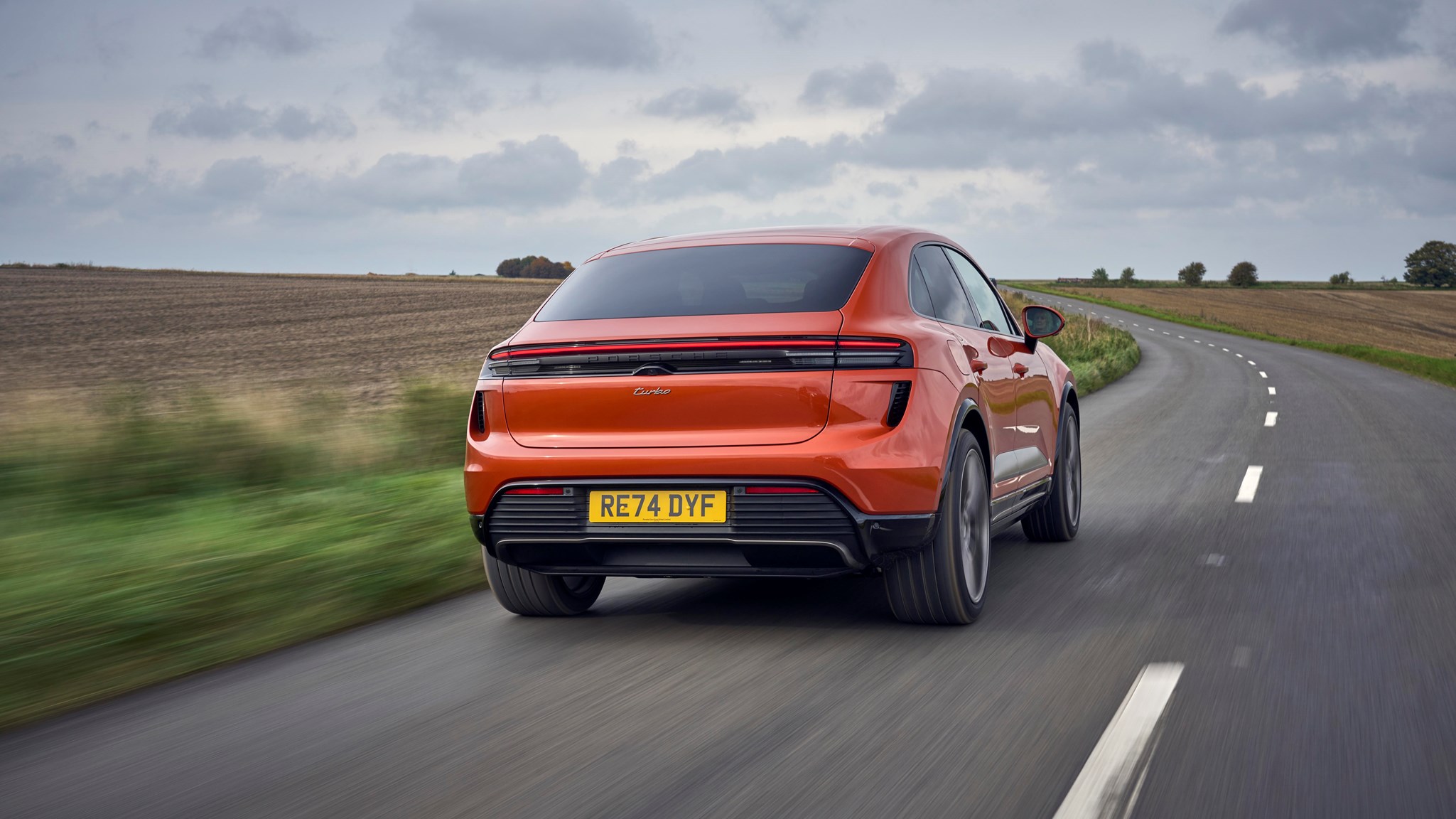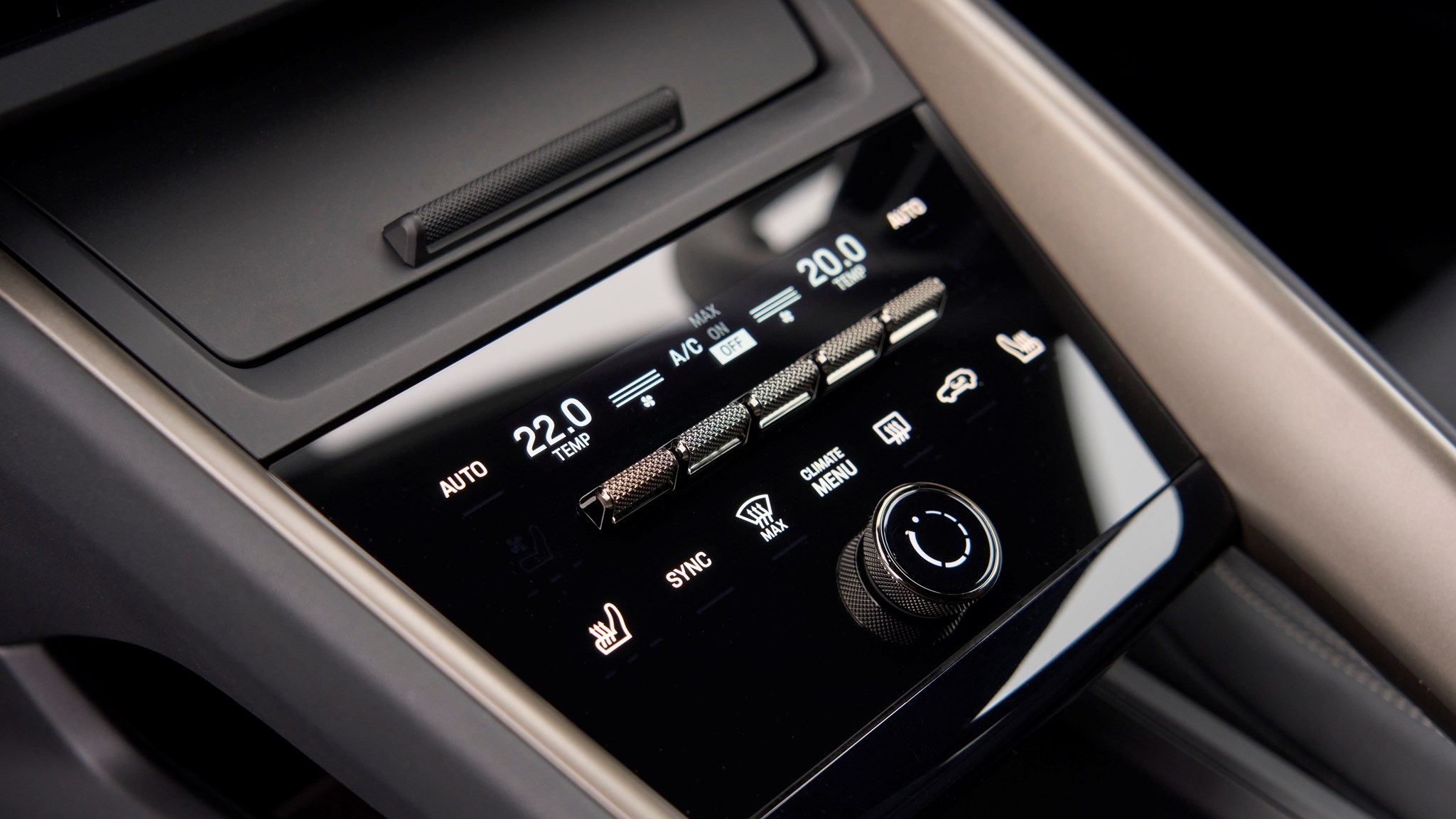► We sample the entry-level Macan in the UK
► Turbo model comes with 630bhp
► Range starts from £67,000
It’s taken almost a year but we’ve finally got the chance to try the all-electric Porsche Macan on UK roads. Never mind the snooker table smooth tarmac of Baden-Württemberg where Porsche’s latest EV was dreamt up, the battleground of Great Britain’s busy, often broken roads (and charging network) is the litmus test that signals success or failure for this luxury SUV.
After all, the new Macan is a risky play for Porsche. The firm isn’t exactly new to the world of electric cars – the Taycan’s been around for half a decade now – but this is the first time the brand has turned one of its petrol cars into EV.

What’s even braver is Porsche’s decision to take that plunge with the car that earns it all its money. Globally, the Macan is Porsche’s best-selling model with more than 850,000 units finding buyers since it hit the showrooms in 2014.
It’s the automotive equivalent of chucking the family savings account on black. Scroll down to find out whether we think the gamble will pay off.
At a glance
Pros: Great steering for an EV, strong performance across the range, excellent quality
Cons: Only available as an EV, expensive options, dual motor models not that efficient
What’s new?
Everything. Petrol engines? Gone (although you can still buy the previous gen petrol Macan for the foreseeable future). It’s electric motors or nothing now. Platform? That’s the Volkswagen Group’s Premium Platform Electric (PPE) architecture, which Porsche co-developed with Audi for the Q6 e-tron.
New interior. New suspension. Even the Macan’s badge is as fresh as an AI-driven smartphone. The range-topping Turbo model gets a black and white ‘Turbonite’ emblem, to match the rest of Porsche’s Turbo models.
What are the specs?
They range from impressive to startling. The most basic Macan has a single electric motor that delivers 355bhp and 415lb ft of torque at the rear wheels. That’s enough for a 0–62mph time of 5.7 seconds and a top speed of 138mph.
Every other Macan has two electric motors – one to serve each axle. The 4 has identical synchronous motors on the front and rear that are shared with the Audi Q6, giving peak figures of 382bhp and 479lb ft. The extra poke trims the car’s 0–62mph time down to 5.2 seconds, although top speed remains the same. The 4S, meanwhile, has a bigger motor on the rear that boosts output to 509bhp while cutting 0–62mph down to 4.1 seconds.

The Turbo uses an even larger rear motor that’s unique to Porsche. That results in a simply preposterous output of 630bhp and 833lb ft. Air suspension is also offered across the range (although it’s only standard on Turbo) and there’s now a four-wheel steering system (which is £1445 optional extra).
Every model promises convenience, too. All Macans have a 95kWh battery and 800-volt charging tech (just like the Taycan). So, hook the car up to a 270kW DC charger and it’ll surge from 10–80 percent capacity in just 21 minutes.
Range predictions are equally strong. Officially, the rear-driven Macan can cover almost 400 miles between charging stops, while the 4, 4S and Turbo can manage 380, 377 and 367 miles respectively. That means real-world range of more than 300 miles across the board. If you drive sensibly, that is.
How does it drive?
Simple answer? Very well. But the model range hasn’t been created equal.
We’ve now sampled Macans on both steel and air suspension and while we thought the air-sprung Macan was too nervous and unsettled during our initial test drives, time behind the wheel in the UK suggests otherwise. Across the vast majority of road surfaces, the top-spec Turbo model felt composed and largely unfussed by all but the largest road imperfections.
We’ll confirm our verdict on the differing suspension setups once we’ve had more time in the car, but leaving that aside the Macan really is an outstanding drive. We’re not going to pretend it’s as exciting as a 718 Cayman or 911 Carrera but, for a lardy electric family SUV, it puts on an impressive show. It offers the sort of agility the Ford Mustang Mach-E can only dream of.

In what’s going to become a common theme in this review, the cheapest rear-driven model is the one to have if you’re bothered about handling. Because the front wheels aren’t driven, it understeers less than the 4S and, because it’s lighter, its suspension is wrestling with less mass.
Porsche’s work on the Macan’s steering system is worth highlighting, too. It feels nothing like the Audi Q6 e-tron and, although it isn’t exactly overflowing with feedback, it’s by far the sharpest and most direct setup in its class. The brakes also deserve a special mention, as Porsche has masterfully tuned the transition from regenerative to friction braking. The pedal is firm at the top and feels natural right through its travel.
With the extra power and extra chassis tech, you can carry frankly obscene amounts of speed into corners. Stability on turn-in is helped by the four-wheel steer system, but the overall experience is a more contrived and synthetic. Plus, that rear-steer system finds lumps and bumps in the tarmac that the front end seems to miss entirely.
As an aside, the Macan doesn’t have any regen as standard, which means one-pedal driving (like you can engage in a Kia EV6) isn’t possible. You can introduce more regen on the Macan but it’s only possible by fiddling with the touchscreen – no paddles here – as Porsche reckons the most efficient braking method is via the middle pedal. And it’s hard to argue the contrary when the pedal works as well as it does here.
What about the interior?
God, it’s good. Unlike certain manufacturers (we’re looking at you, Stellantis), Porsche has done a great job of hiding its association with its sister brands. You get bespoke seats, a unique dashboard and the same skinny steering wheel and high-quality switchgear as the Taycan and 911. Go mad with the configurator and you can even add a touchscreen in front of the passenger, much like on the facelifted Cayenne. It isn’t cheap at £1112 but it means the passenger can watch a movie and not disturb the driver.
As standard, you get a 12.6-inch curved digital dashboard and 10.9-inch central display. The latter isn’t overbearing like it is on cars like the Mercedes-Benz EQA because it’s housed within the dash, rather than sitting proud of it. Anyone familiar with Porsche’s operating system will find it easy to use – and, praise be, physical buttons remain for altering the climate control, unlike on an EQ-badged Mercedes.

It’s also a nicer place to be. The new Macan’s wheelbase is 86mm longer than the old car, so legroom is improved. Headroom is only adequate in the back (a six-footer is fine), but it’s mightily impressive in the front thanks to how low the seats can go.
As ever, Porsche shows that an electric seat isn’t an impediment when it comes to getting a seat to go low enough. It’s also got a bigger boot than the last Macan that’s supplemented by an 84-litre frunk and plenty of storage in the cabin. Just beware of carrying large, square items as the coupe-like shape of the Macan’s back end mean that the boot is a bit pinched for tall objects.
Before you buy
This is a huge leap forwards for the Macan, but it’s worth pointing out that the existing petrol-powered car will remain on sale until the end of 2025. That’s only for the UK, though – in Europe, it’ll be pulled from the showrooms in July because of new EU rules.
We urge you to exercise caution when designing your car. Porsche’s configurator is addictive and it’s very easy to get carried away with extras. The 4 we drove had almost £25,000-worth of optional extras, with some of the punchier ones being Porsche’s extended leather package (£2805) and adaptive air suspension (£2064).

The 20-inch wheels are standard, and do improve the Macan’s ride quality. Just paint the standard car a fancy colour, add a dash of extra interior tech and head on down the road.
Rivals for the Macan are growing by the day. At the top end, the exotic Maserati Grecale Folgore is the obvious rival (higher price, lower power than the Turbo), while cars like the Polestar 4 and BMW iX3 offering competition at the lower end of the Macan’s price range. And obviously the Audi Q6, with which the Macan shares so much.
Verdict
The new Macan should be a recipe for huge success. It’s carrying all the lessons from the Taycan, refined and is packaged in a car with a more fashionable elevated driving position. And with the sort of performance the four-wheel drive models offer, no-one who bought the last Macan will be disappointed with this one.
But we still can’t help but think the four-wheel drive, air-sprung cars aren’t worth the extra money over the most basic rear-wheel drive model. It’s a purer, simpler experience that feels more authentic. Plus, the base model is still anything but slow.
Is the new Macan another game-changer for Porsche? Not quite – but then it was always going to be difficult to replicate the ground breaker that was the Taycan. But, as a way of updating the Macan and propelling it into the late 2020s, it’s hard to see how this will be anything other than a smash hit. The family savings are safe.